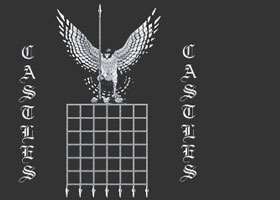 |
Knights of the Round Table |
| The Knights of the Round Table | |||
| Knights of the Round TableKnights of the Round Table - The Round Table Knights of the Round Table - The Round Table - was first mentioned by the twelfth century Norman poet Wace in his "Roman de Brut". |
This poem was based on a translation of the Historia Regum Britanniae (the History of the King's of Britain by Geoffrey of Monmouth) into French verse. The poem was called Roman de Brut which Wace presented Queen Eleanor of Aquitaine, wife of King Henry II, in 1155. Wace embellished the Arthurian story and invents the legend of the Round Table. Wace is also the first to ascribe the name Excalibur to King Arthur's sword. The excerpt from the poem by Wace which first makes mention of the Round Table is as follows: Pur les nobles baruns qu’il out, The Round Table was not only a physical table, but was also the highest Order of Chivalry at the Court of King Arthur. During the Medieval era society was based on the pyramid-shaped Feudal System. The King and the most powerful Lords were seated at a "high table" on a dais. Wace writes in his Brut that King Arthur ordered the Round Table to be built in order to resolve a conflict among his knights concerning who should have precedence. All seats at the Round Table were favoured places, and all were equal. The Knights of the Round Table were served their food as equals and none of them could boast that he had a seat of higher dignity than that of any of his fellow Knights. Knights of the Round Table
The Knights of the Round Table Code of Chivalry
|
The Knights of the Round Table at Winchester The Names of Knights on the Round Table at Winchester
Knights of the Round Table |
Knights of the Round Table | |||
Arthurian Legend - Knights of the Round Table -
King Arthur |
| © March 2018 SiteSeen Ltd. | Cookies Policy | Privacy Statement | By Linda Alchin | ||
